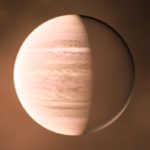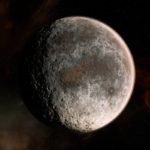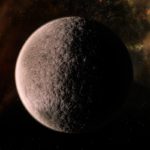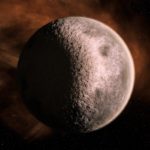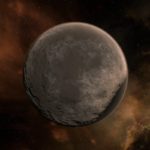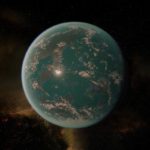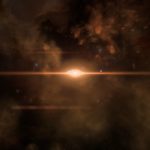System Specs:
- Stellar Mass: _ Sol-masses
- Stellar Class: _
- Luminosity: _ Sol
- Planets: 6
- Moons: 0
- Asteroid Belts: 0
- Asteroids: 0
- Objects: 2
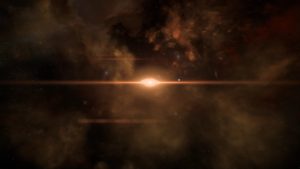
The system is named after the Tecunis Expedition, the first salarian astronauts to reach the Citadel.
–
Planets Directory:
- Vinvaiko
- Mosiiba
- Mosiino
- Mosiives
- H-523
- Slohva
- Tamoko’s Arrow (comet)
–
Vinvaiko:
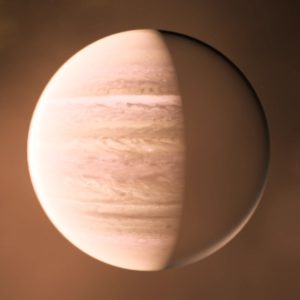
- Orbital Distance: 9.9 AU
- Orbital Period: 7.4 Earth-years
- Keplerian Ratio: 17.719
- Radius: 18,232 km
- Day Length: _ Earth-hours
- Atmospheric Pressure: 1.07 atm
- Surface Temp: _ °C
- Surface Gravity: _ g
- Mass: _ Earth-masses
The hydrogen and helium atmosphere of this gas giant has been slowly stripped away over hundreds of millions of years, consumed by the Tecunis sun. Given time, it may be reduced to a terrestrial world.
Anomaly
Satellite
DATA:
- Satellite ID: Unknown
- Power readings: 83.2%
- System report: Severe damage to broadcast array
- Status: Active
ANALYSIS:
A scientific monitoring satellite. It is no longer transmitting its findings and appears to have been damaged by a gradual descent into the gas giant’s atmosphere.
–
Mosiiba:
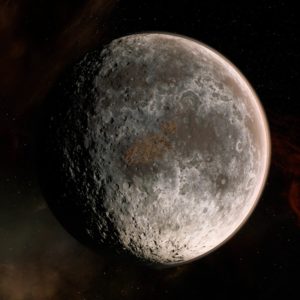
- Orbital Distance: 11.1 AU
- Orbital Period: 21.0 Earth-years
- Keplerian Ratio: 3.101
- Radius: 3,324 km
- Day Length: _ Earth-hours
- Atmospheric Pressure: 0.77 atm
- Surface Temp: 139 °C
- Surface Gravity: _ g
- Mass: _ Earth-masses
One of three rocky planets named for the “stones of life” of an ancient salarian religion, Mosiiba is the smallest and hottest of the triad.
Anomaly
Beryllium
DATA:
Beryllium
ANALYSIS:
A metal ideal for lightweight construction in a variety of applications. This deposit is readily accessible.
–
Mosiino:
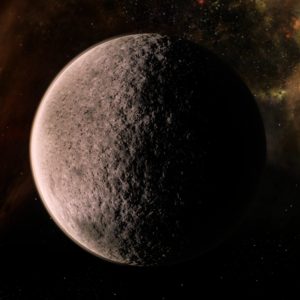
- Orbital Distance: 12.7 AU
- Orbital Period: 28.8 Earth-years
- Keplerian Ratio: 2.47
- Radius: 6,842 km
- Day Length: _ Earth-hours
- Atmospheric Pressure: 0.00 atm
- Surface Temp: 70 °C
- Surface Gravity: _ g
- Mass: _ Earth-masses
The largest of the three sibling worlds of the Tecunis system, Mosiino has a hot surface and an extremely thin atmosphere composed of methane and argon.
–
Mosiives:

- Orbital Distance: 14.4 AU
- Orbital Period: 31.1 Earth-years
- Keplerian Ratio: 3.087
- Radius: 6,448 km
- Day Length: _ Earth-hours
- Atmospheric Pressure: 0.04 atm
- Surface Temp: 66 °C
- Surface Gravity: _ g
- Mass: _ Earth-masses
The outermost of Tecunis‘ three sibling worlds, Mosiives is a mountainous planet of lime and potassium.
–
H-523:
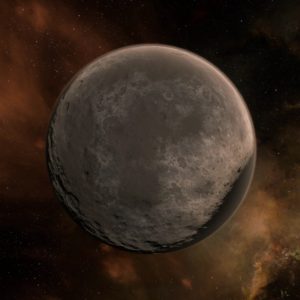
- Orbital Distance: 59.9 AU
- Orbital Period: 264.3 Earth-years
- Keplerian Ratio: 3.077
- Radius: 6,314 km
- Day Length: _ Earth-hours
- Atmospheric Pressure: 4.31 atm
- Surface Temp: 336 °C
- Surface Gravity: _ g
- Mass: _ Earth-masses
H-523 appears to have been a “rogue planet” captured by Tecunis’ gravity and brought into an unusual orbit around the star. Long-term study of its composition may reveal more of its origins.
–
Slohva:

- Orbital Distance: 61.2 AU
- Orbital Period: 273.0 Earth-years
- Keplerian Ratio: 3.076
- Radius: 4,394 km
- Day Length: _ Earth-hours
- Atmospheric Pressure: 3.51 atm
- Surface Temp: 288 °C
- Surface Gravity: _ g
- Mass: _ Earth-masses
Despite its ferocious heat and thick, methane-rich atmosphere, Slohva might have been capable of supporting microbial life millions of years ago.
–
Comet Tamoko’s Arrow:
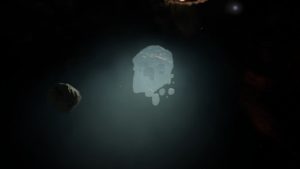
DATA:
- Nucleus: 8.6 km
- Coma Cloud: 52,800 km
- Current Tail: 602,000 km
ANALYSIS:
The orbit of this star-grazer has persisted despite the Scourge and other hazards. Likely it will withstand even a significant attempt to mine its core elements.
–
